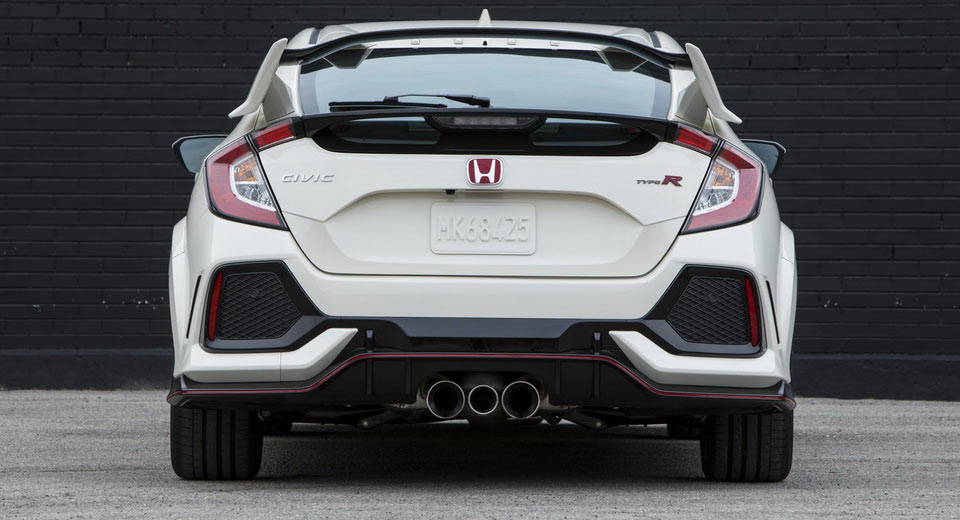With 310 PS (306 HP) and 400 Nm (295 lb-ft) of torque at its disposal, the 2017 Honda Civic Type R has every right to look as aggressive as possible.
Some people, however, might consider its rear end to be a little bit excessive, especially with such a large wing (basically two rear wings if you count the smaller one), and those three exhaust pipes.
Last week, car reviewer Doug DeMuro had quite a few bad things to say about the Type R’s rear end, stating that he doesn’t understand why it was necessary for Honda to fit it with three exhaust pipes. He obviously thought, as others might have, that Honda was “trying too hard”.
In reality, it seems that the triple-exhaust system is actually a fully functional addition that makes complete sense on the Type R, as long as Civic senior product planner, Rob Keough walks you through it that is.
In an interview with Road&Track, Keough stated that “traditionally with these big flow exhaust systems, when you get up into highway speeds, you can get a lot of droning, booming, buzzing – not very comfortable for high speed cruising.”
It’s for this reason that Honda went with three pipes, not wanting to resort to stereo-enhanced engine sounds. The way the system works is that the two outer pipes (the larger ones) come with straight-flow mufflers, whereas the center pipe is a resonator tasked with performing a specific aural trick.
At low speeds, you’ll hear the resonator generating a louder and more aggressive growl “both outside and inside the car,” said Keough. At high speed cruising though, exhaust flowing through the center pipe hits a resonant frequency. As the resonator gets stuffed with air, the resulting backpressure diverts the exhaust to flow exclusively through the larger outboard mufflers, thus reducing cabin noise at highway speeds.
“It basically diminishes the resonator effect at that point, attenuating the sound inside the car,” added Keough. “You still get your big flow through the outboard pipes, but you get a more refined in-cabin experience at high-speed cruising. When it’s not flowing through the center resonator, it’s not generating that extra resonance. So it’s not like you have zero exhaust sound, but you’re not generating this extra sporty sound that comes from the resonator.”
Keough also said that the whole idea behind the 2017 Type R was to have a raw, honest machine, which is why the exhaust system doesn’t feature any fake notes pumping through the stereo.
“We didn’t build in servos or flap valves. This is a very simply designed system where you’re getting the effect without additional moving parts. It’s a very durable, low cost and effective solution.”
As for whether himself or Honda would get frustrated seeing all those people that are likely to fiddle with the car, installing aftermarket parts:
“We kind of anticipate that. We wanted to deliver a high quality, sporty, but refined experience for this customer, but we already know some kids are gonna want more noise. We’re not going to be particularly offended.”
So then maybe, just a little bit offended?









